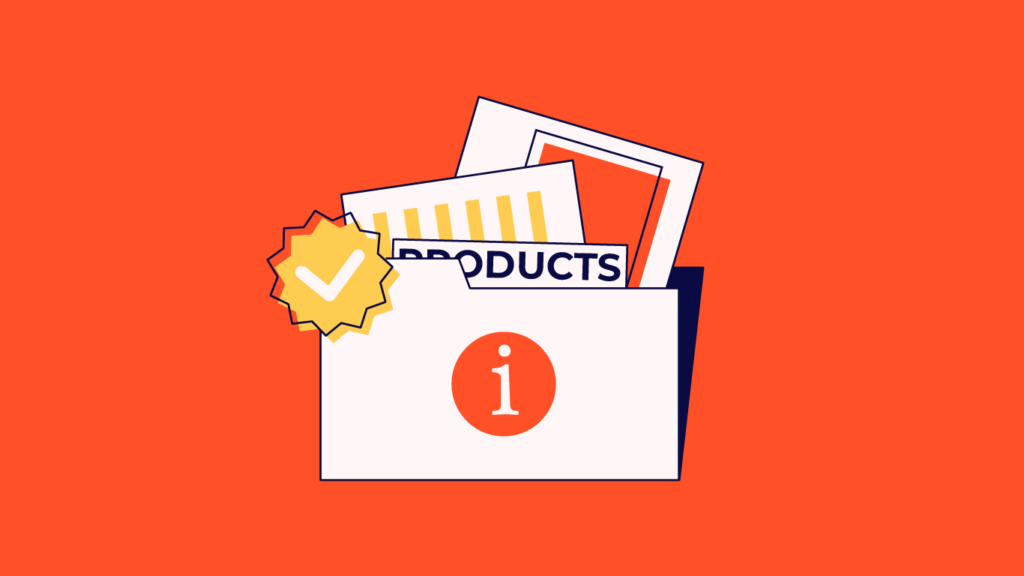Keeping up with product information management (PIM) best practices is an important aspect of commerce. Proper PIM implementation procedures ensure that the correct product data is available at every touchpoint in the customer journey, from discovery to sales.
Unfortunately, many businesses pay little attention to PIM in data management. Or, businesses that do consider PIM solutions are stuck using outdated methods like spreadsheets or pen-and-paper recordkeeping.
The ecommerce world is evolving fast, and better ways to streamline product information are emerging. PIM software can elevate your data-keeping procedures and empower your sales team members through a single source of truth. The best product information management systems will even let you run reports and analyze product data for future business decision-making.
In this article, I will discuss some PIM best practices that you can apply to keep product content organized and integrated within your production process.
What Is Product Information Management?
Product information management refers to data handling that is used to sell a product. This data includes product catalogs, reviews, descriptions, images, how-to or marketing videos, and instructions.
Product information management focuses on keeping all product data up-to-date and easily accessible. PIM solutions may also push your product data to external sites, like Amazon or the digital catalog on your website, to keep the data quality and user experience consistent.
Importance Of PIM Systems
Most businesses are familiar with enterprise resource planning (ERP) software, which covers everything from inventory management solutions to human resources files to company accounting to customer relationship documents. Many companies let their ERP do the work of product information management. However, product information tends to get lost in this huge data pool.
ERP and PIM systems can work in tandem, with PIM platforms being better for:
- Gathering rich product data for marketing campaigns.
- Updating product information across all platforms.
- Dedicated solutions for launching a new product line.
- Integrating newly acquired products into your sales channels.
According to a study done by Ventana Research, only about 28% of companies currently have dedicated PIM software working for them. This means that integrating a good PIM tool into your commerce workflow could set you ahead of 7/10 of your average competitors.
Product Information Management Best Practices
Ready to get started with a dedicated PIM solution for your inventory and commerce business? Here are some product information management best practices that every company should adhere to.
Related Read: What Is Inventory Management? And How To Get It Right
1. Establish product information requirements and enactment plans
Build a strong product information case. If it is a new product, do a thorough review and come up with an exhaustive product description summary. Consider bringing a product manager on board to help analyze the market and competition.
A good product vision should be accompanied by proper implementation plans. This involves choosing the right PIM software to help deliver unique value.
2. Invest time in enhancing your catalog structure
Catalog structure is the center of focus in product information management. Considering that it will feature on a variety of channels, adequate attention is important in bringing out product information in a clear manner.
A good catalog has the following features:
- Should suggest alternative products.
- State product categories and product attributes.
- Include specific attributes for different channels.
- Has high-quality product descriptions with pictures and videos whenever necessary.
3. Integrate all product information
Data integration is one of the main reasons for managing product information. Thus, consolidating scattered information about a product into a single location is the first step in having a sound structure.
The information should be consistent and easy to format by the PIM system. Integrated information should be error-free and easy to scale. This is why the PIM system is a great one-stop system for product data management.
4. Focus on product information enrichment
Having a competitive edge over other retailers means emphasizing product description quality. This is through the usage of high-resolution images and video and writing clear and catchy descriptions.
A product manager can help with areas that need focus to reach a wider market.
5. Choose the right PIM software
Come up with a PIM requirement checklist before purchasing PIM software. A good ecommerce platform is one that:
- Has the ability to edit huge files at a good speed.
- Cloud-based for improved security and easy accessibility.
- Can coordinate with other data management software.
- Offers digital asset management.
6. Optimize product performance
To convert shoppers into regular customers, optimize product performance across channels. This tactic, if combined with efficient management of product information, will drive traffic and improve sales.
Below are a few areas to focus on:
- Search engine optimization (SEO) for your product information.
- Monitor your product experience across channels and identify areas that need improvement.
- Plan product information that will convert by first analyzing the market.
- Customize product information for target sales channels.
Benefits Of Product Information Management
PIM improves customer experience and customer satisfaction
PIM solutions offer customers consistent information about products. Product returns and complaints are reduced by a bigger margin.
Customers can see available stock and new products available without much hassle.
They are, in turn, able to make informed buying decisions without persuasion from sales agents.
PIM saves time
Searching for products and updating inventories is easy with PIM software. No time is wasted in manual data entry, as would be the case using spreadsheets.
Cleaning data and streamlining information for PIM integration takes little time. Employees, therefore, have more time to handle other profitable assignments.
PIM saves money
Good PIM systems cut supply chain and operational costs. Accurate information reduces managerial risks and bad product data expenses. Stock can be replaced before customers launch complaints.
PIM data is also used by suppliers for auditing and improving delivery methods. This is a good way to win customer loyalty and beat the competition.
PIM offers easier consolidation
Product consolidation is easier compared to enterprise systems. PIM systems can be customized to manage all data processes, hence, cutting costs on new product marketing and management.
PIM improves product management
A good PIM system sorts and manages product information even with the introduction of new products. Customer experience is not affected, and sharing with other channels remains easy. A good PIM can also help manage multilingual product data, ensuring consistency globally.
Steps To Structure A Product Catalog
Proper structuring of a product catalog remains the number one product information management best practice in ecommerce. Conversions are all dependent on how well a catalog is organized.
Here are some steps to structure a catalog:
- Do market research and find out about competitors. Consider hiring a product manager to carry out market analysis and advice on product information.
- Tailor product information in line with the target sales channel.
- Use high-resolution images and videos that hook shoppers and turn them into customers.
- Integrate all product information into one catalog. This way, shoppers have alternatives on the same page.
- Carry periodic system analysis to update new products, discover new trends, and what customers say.
- Invest in a good PIM system with good security.
How To Choose The Best PIM Software
Choosing a good PIM software can be a headache for first-time users.
Here are some of the factors you want to consider.
- People that will use the PIM software: Determine the number of users and their skillset—also, types of users, for example, manufacturers, suppliers, and content managers.
- Data management needs: Pay attention to flexibility and configurability. Integration is important since you’ll need to use data from other sources.
- Identify your data distribution challenges: Some PIM systems have multi-language support systems. This is important when target sales channels and customers come from different ethnicities.
- Maintenance: Get a PIM system that is scalable. It might be costly but worth it in the long run when your business grows. You will be able to add users without incurring extra costs.
Get updates when we publish articles and podcasts featuring the latest tips and insights to use PIM and improve your business processes—sign up for The Ecomm Manager newsletter here.
More great ECM content:


